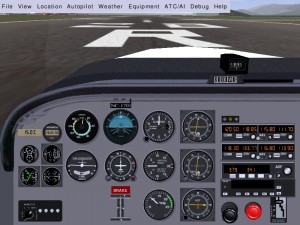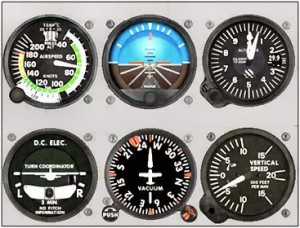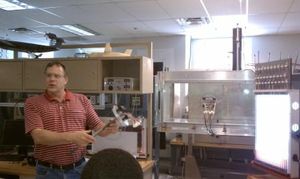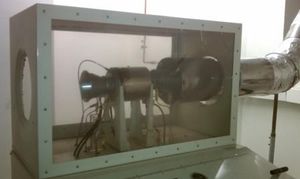Today we finished work on all of our airplanes and put the finishing touches on our Cadet Planes. Students finished work on their Estes rockets and we will be launching the rockets in the morning. Again, many thanks to the New England AFCEA for donating the rockets!
Students began to construct water bottle rockets and most of them made parachutes and tested them out in the 7th floor atrium of the Photonics Center.
While the students were busy with their projects, several of Professor Holt’s students were busy behind the wind tunnel trying to create Faraday Waves s, including, one of my BUA students, Will P. It was exciting to see them attain full Faraday waves after struggling for a half a day.
My morning lecture consisted of explaining how the instrument panel on a Cessna 172 works. We explored the function of the following instrument in the below diagram (going clockwise): Airspeed indicator, the attitude indicator, the altimeter, the turn & slip coordinator, the Heading indicator, and the Vertical Speed indicator. I them demonstrated how these instruments work on Flight Simulator on the projector. You can by a home copy of Microsoft Flight Simulator which we have been using in class for less than $20. Joysticks can be bought for $20 but Rudder Pedals are more expensive at about $100, although they are not necessary.
The students have been instructed to limit any time on the computer to 10 minute increments of playing Flight Simulator and that they many only simulate a Cessna 172 flying in the greater Boston area. I also gave the students VFR flight maps to use as a navigation tool. VFR Flight maps can be ordered online from MyPilotStore.com
In the morning, Professor Sheryl Grace introduced us to how a jet engine works. As a prop, she used an old full size jet engine which has had a section cut away so the students can see the inside of the engine. She also presented a demonstration of a smoke tunnel and further developed the concepts of camber, angle of attack, lift, stall, and laminar flow of air.
In the afternoon, David Campbell demonstrated the wind tunnel and how pressure sensors in the air foil can be read. He also showed us how the pressure drops during a stall. Downstairs, David showed us a working jet engine. This small jet engine only exerts about 25 lbs. of force but was LOUD!




